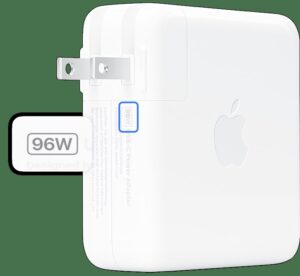If you’ve ever had the battery light in your car suddenly come on, you might have found yourself asking, “What does it mean when the battery light comes on?” Well, worry not! We’re here to provide you with the answer and a solution to ease your concerns. The battery light is an important indicator that shouldn’t be ignored, as it can signal various issues that require attention. In this article, we’ll delve into the reasons behind the battery light illuminating and the steps you can take to address the problem. So, let’s explore what it means when the battery light comes on and how to handle it effectively.
What Does It Mean When the Battery Light Comes On?
When you’re driving, there’s nothing more frustrating than seeing a warning light illuminate on your dashboard. One such warning light that can cause anxiety for many drivers is the battery light. But what does it mean when the battery light comes on? In this article, we’ll delve into the various reasons why your battery light may be illuminated, what it could indicate, and the steps you can take to address the issue.
Understanding the Battery Light
The battery light, often shaped like a battery or labeled “ALT” or “GEN,” is an important indicator that alerts you to potential issues with your vehicle’s charging system. It is typically red or yellow in color, depending on your vehicle’s make and model. When the battery light comes on, it means that the electrical charging system may not be functioning properly, leaving your battery vulnerable to draining and potentially leaving you stranded.
Potential Causes for the Battery Light to Come On
There are several reasons why the battery light may come on, ranging from minor issues to more serious problems. Here are some possible causes:
- Faulty Alternator: The alternator is responsible for charging the battery while the engine is running. If the alternator fails, your battery may not receive enough charge, causing the battery light to come on.
- Loose or Broken Alternator Belt: The alternator belt connects the alternator to the engine. If it becomes loose or breaks, the alternator may not be able to charge the battery effectively.
- Faulty Battery: If your battery is old or damaged, it may not hold a charge properly. This can lead to the battery light coming on.
- Corroded Battery Terminals: Corrosion on the battery terminals can disrupt the flow of electricity, preventing the battery from charging properly.
- Worn Out Serpentine Belt: The serpentine belt is responsible for powering various components in your vehicle, including the alternator. If the belt wears out or breaks, it can impact the charging system.
- Blown Fuse: A blown fuse in the charging system can disrupt the flow of electricity and trigger the battery light.
- Electrical Issues: Wiring problems or faulty sensors related to the charging system can also cause the battery light to come on.
What to Do When the Battery Light Comes On
When the battery light comes on, it’s important not to panic. Here are some steps you can take to address the issue:
1. Check the Alternator Belt
If the alternator belt appears loose or broken, it may need to be replaced. Consult your vehicle’s manual or a trusted mechanic for guidance on how to inspect and replace the belt.
2. Inspect the Battery
Check the battery terminals for signs of corrosion or damage. If necessary, clean the terminals using a battery terminal cleaner and tighten any loose connections. If the battery itself is old or faulty, it may need to be replaced.
3. Test the Alternator
A malfunctioning alternator can cause the battery light to come on. Take your vehicle to a trusted mechanic who can perform a thorough alternator test to determine if it needs to be repaired or replaced.
4. Check the Serpentine Belt
If the serpentine belt is worn out or broken, it will need to be replaced. A mechanic can inspect the belt and replace it if necessary.
5. Investigate Electrical Issues
If you suspect electrical issues are causing the battery light to come on, it’s best to consult a professional mechanic who can diagnose and repair any wiring problems or faulty sensors.
6. Avoid Driving Long Distances
Driving with the battery light on for an extended period can put strain on your vehicle’s electrical system and potentially drain the battery. If possible, avoid driving long distances until the issue is resolved.
Preventing Battery Light Issues
While some battery light issues are unavoidable, there are steps you can take to prevent them from occurring or worsening:
1. Regular Maintenance
Stay on top of your vehicle’s regular maintenance schedule, including battery and alternator checks. This can help identify potential issues before they escalate.
2. Keep Connections Clean
Regularly inspect and clean the battery terminals to prevent corrosion. Apply a battery terminal protector to help inhibit future corrosion.
3. Avoid Overusing Electrical Accessories
Excessive use of electrical accessories, such as headlights, air conditioning, or stereo systems, can put strain on your vehicle’s charging system. Use them judiciously to minimize the load on the battery and alternator.
4. Drive Regularly
Letting your vehicle sit idle for long periods can contribute to battery drain. If possible, take your vehicle for regular drives to keep the battery charged.
When the battery light comes on in your vehicle, it’s essential to address the issue promptly to avoid potential breakdowns. By understanding the potential causes and following the recommended steps, you can take the necessary actions to resolve the problem and ensure the reliable operation of your vehicle’s charging system. Remember, if you’re unsure about any of the steps or if the issue persists, it’s always best to consult a professional mechanic for further assistance.
Frequently Asked Questions
Why is my battery light coming on?
When the battery light comes on in your vehicle, it typically indicates a problem with the charging system. This warning light is often a red or yellow symbol in the shape of a battery and can be found on your dashboard. There could be several reasons why the battery light is illuminated:
What are the common causes of the battery light coming on?
There are a few common causes for the battery light to come on:
- A faulty alternator: The alternator is responsible for charging the battery while the engine is running. If it malfunctions, it may not be able to provide enough power to the battery, triggering the battery light.
- A loose or worn-out drive belt: If the drive belt that connects the alternator to the engine is loose or worn-out, it may not spin the alternator properly, resulting in insufficient charging and the battery light coming on.
- A weak or failing battery: If the battery itself is old or no longer holds a charge, it may not have enough power to keep the electrical system running smoothly, causing the battery light to illuminate.
What should I do if my battery light comes on?
If the battery light comes on while you are driving, it is essential to take action to prevent a potential breakdown. Here are a few steps you should follow:
- Turn off unnecessary electrical accessories: To reduce the strain on the battery and charging system, turn off any non-essential electrical components like the air conditioning system, radio, and headlights.
- Get to a safe location: If it is safe to do so, try to find a safe place to pull over and park your vehicle. Avoid stopping on busy roads or in hazardous conditions.
- Check the drive belt: Inspect the drive belt connected to the alternator. If it appears loose or damaged, it may need to be replaced.
- Have the battery and charging system inspected: It is recommended to have a qualified mechanic or technician inspect your battery, alternator, and electrical system to determine the root cause of the issue.
Can I continue driving with the battery light on?
It is not recommended to continue driving for an extended period with the battery light on. If the charging system is not functioning correctly, your vehicle may rely solely on the battery’s remaining power. Eventually, the battery will drain, causing the engine to stall and leaving you stranded. It is best to address the issue as soon as possible to avoid any inconveniences or potential safety hazards.
Final Thoughts
When the battery light comes on in your vehicle, it is a warning sign that should not be ignored. This indicator typically means that there is an issue with the charging system or the battery itself. It could indicate a faulty alternator, a loose or corroded battery connection, or a weak battery that needs to be replaced. Ignoring this warning light could result in your car breaking down or even worse, being stranded in an inconvenient location. It is important to address the issue promptly by seeking professional assistance to diagnose and resolve the underlying problem. So, what does it mean when the battery light comes on? It means that you need to take action to prevent further damage to your vehicle and ensure your safety on the road.




